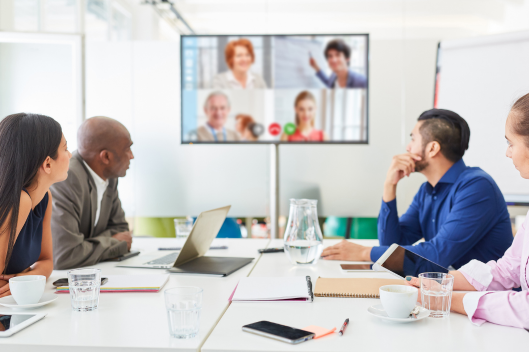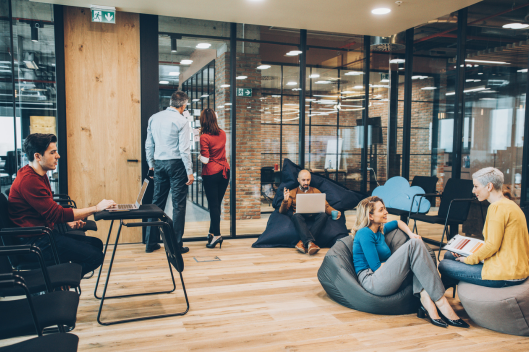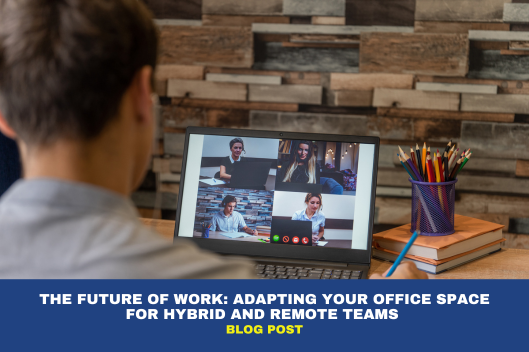Warehouse Clearance Sale – Limited time only!
The Future of Work: Adapting Your Office Space for Hybrid and Remote Teams
As work changes quickly, organisations need to adjust their offices for hybrid and remote teams. In this article, we explore important factors and approaches for creating office spaces that meet the needs of in-person and remote employees. We focus on collaboration, connectivity, and employee well-being, and discuss key considerations and strategies.
The Changing Landscape of Work
Embracing Flexibility and Remote Work
The traditional nine-to-five office culture is changing as flexible work arrangements become more common. These arrangements allow employees to work remotely, offering benefits such as work-life balance and access to a global talent pool. To support this change, organisations need to adapt their office spaces by providing the infrastructure and resources needed for remote work.
Designing Versatile Workstations
To encourage collaboration among hybrid and remote teams, office spaces should have flexible workstations that can be easily rearranged. Open-plan layouts with adaptable furniture enable different team sizes and work styles. This helps teams work together, improves communication, and strengthens the sense of camaraderie among team members.
Dedicated Collaborative Areas
In addition to flexible workstations, having specific areas for teamwork is important. Meeting rooms with video conferencing technology help people in the office and those working remotely communicate smoothly, making everyone feel connected and engaged. These spaces are also where teams can come together to share ideas, solve problems, and make decisions, regardless of where team members are physically located.

Integrating Technology for Connectivity
Advanced Audiovisual Equipment and Connectivity
To connect in-person and remote employees, organisations need to invest in good audiovisual equipment and strong internet connections. Having high-quality video conferencing systems, reliable audio equipment, and fast internet helps create a virtual bridge that connects people no matter where they are.
Prioritising Employee Well-being and Work-Life Balance
Biophilic Design Elements
To make your office spaces more employee-friendly, you can include elements of biophilic design. This means using natural lighting, indoor plants, and green areas. These not only make the office look nice but also improve air quality, reduce stress, and boost productivity. Connecting with nature in the office creates a peaceful atmosphere and makes employees happier.
Spaces for Recharging and Relaxation
Breakout areas, relaxation zones, and wellness rooms are important for supporting employee well-being. These spaces give employees a chance to take breaks, recharge, and relax, which helps their mental well-being and reduces stress. It’s crucial to have comfortable and inviting office relaxation areas in the office to support a healthy work-life balance.

Fostering Community and Employee Engagement
Communal Spaces for Social Interaction
To create a strong community and keep employees engaged, office spaces should have areas where people can socialise. Shared kitchens, lounge areas, and recreational spaces encourage informal conversations, collaboration, and building relationships. This helps employees feel like they belong and creates a sense of friendship among coworkers, which strengthens the company culture.
Team-Building Activities and Events
It’s important to organise team-building activities, workshops, and events to create a united and motivated workforce. These activities can be done in person or online, so both in-office and remote employees can participate. By encouraging team members to connect, learn from each other, and build relationships, companies can promote collaboration and make employees happier overall.
Conclusion
With hybrid and remote work becoming more common, organisations need to adjust their office spaces accordingly. By being flexible, creating spaces for collaboration, integrating technology, prioritising employee well-being, and building a sense of community, companies can help their employees succeed in the evolving work landscape. The office of the future is one that combines in-person and remote work seamlessly, encouraging connectivity, productivity, and employee happiness.
At Direct Office, we understand the importance of adapting your office space to meet the needs of hybrid and remote teams. That’s why we offer FREE Space Planning services to help you optimise your workspace. Our experienced team will work closely with you to design an office layout that aligns with your goals and supports the future of work.
Contact Direct Office today to take advantage of our free space planning services. Together, we can create a workplace that embraces the future of work and drives success for your organisation.
